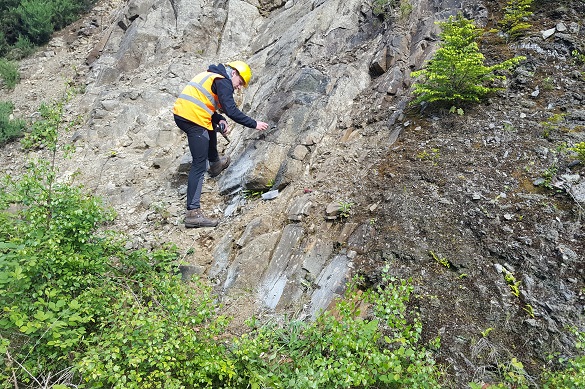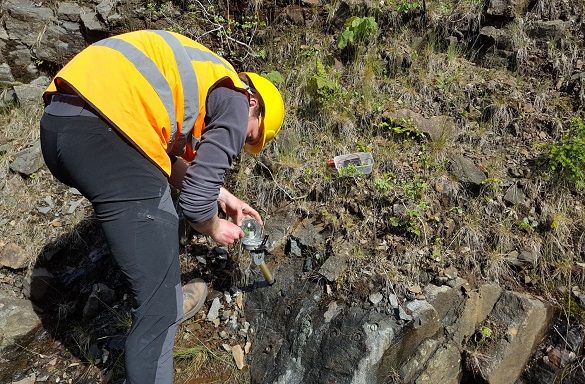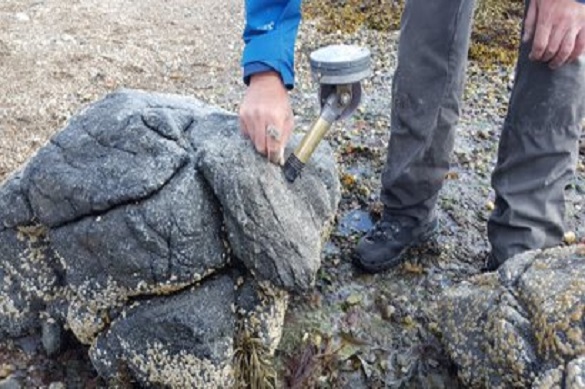
Alexander Tully is 2nd Year PhD student with the Geomagnetism Lab in the Department of Earth, Ocean and Ecological Sciences. His supervisors are Dr Greig Paterson (primary), Professor Andy Biggin and Professor Richard Holme:
The Earth’s magnetic field is weakening – but are we heading for a geomagnetic reversal where the magnetic North and South poles flip?
No-one really knows, nor do we know what impact this will have upon our planet. The geomagnetic field has been an important part of civilisation for thousands of years, allowing us to navigate with compasses and explore the world, but also providing us with a protective shield from solar and cosmic radiation.
Without this protection, both our health and infrastructure may be at risk. The South Atlantic Anomaly is a large area where the field is relatively weak, and the reduced protection makes this a hot spot for satellite failures due to radiation damaging the electronics on board. If the magnetic field were to weaken for a reversal, the damage to ground based electrics may be enormous.
Our research is of a fundamental nature, trying to gain a greater understanding of how the geomagnetic field forms, how it behaved in the past, and how it will behave in the future. The magnetic field is the only direct way of probing the deep Earth through time.
Bettering our knowledge of the magnetic field allows us to expand our understanding of how our planet works; from the movement of iron in the liquid outer core and when the inner core formed and began its expansion, to the cycle of creation, movement, and destruction of tectonic plates.

Palaeointensity Research
My research focuses on palaeointensity (a branch of palaeomagnetism), the study of how the strength of the geomagnetic field varied in the past, over more than a billion years.
During rock formation the direction and strength of the surrounding magnetic field is locked in as it cools. We can extract the magnetic signal from these rocks by successively heating samples to higher and higher temperatures in a magnetic field we control in the lab. These experiments take time to carry out and have success rates typically of only 5-10%. Such low success rates mean that every last bit of data is valuable.
My research involves developing state of the art numerical simulations, experimental work, and large data mining and analysis efforts, to investigate how accurate our experiments really are and importantly, both how we can assess old studies and improve new ones.
This will allow for greater weight to be assigned to highly accurate studies that are carried out around the world recently and in the future, while also still being able to use older or less rigorous studies with lower weighting. By improving our understanding of what data is fed into geomagnetic models, we can increase their accuracy and assess just how quickly the Earth’s magnetic field is weakening and if a geomagnetic reversal is around the corner.
Once the recent past and future magnetic field have been tackled, attention can be turned to studies on rocks hundreds of million years old. Assessing these studies will help to improve our understanding of how the Earth has evolved through time, answering other important questions in Earth science.

Lab and Field Work
Earth Science presents a fantastic diversity of ways in which to study and work. Last summer I ventured to the Isle of Skye with another palaeomagnetism PhD student, Mary, to help with her field work. We worked our way along the beach each day, hauling our equipment through some of the most beautiful scenery in the country.
At each rock formation we drilled several cores with diamond tipped drills to take back to the lab, being careful to keep them cool during extraction with plenty of water. This avoids wiping the magnetic signal they contain. Each sample has to be oriented carefully to allow us to determine the direction of the magnetic field recorded by the sample. This is can be done with a compass but preferably we use a sun compass, though in the North of Scotland we had to move fast to make the most of the sunshine when it appeared.

To minimise the visual damage that the bore holes create we worked near the waterline, sometimes coming a little too close to becoming stranded on an outcrop as the tide came in. Soggy socks however were not enough to deter us from collecting a bumper crop of rock samples that will be used back in the lab for experiments to find how variable or “wobbly” the Earth’s magnetic field was when they formed.
Liverpool has one of the best labs in the world, with a huge variety of experimental techniques available to us including many that were pioneered in the lab.
Travel is not just for field work, but also to meet and collaborate with other researchers across the world. I have been lucky enough to attend workshops and conferences not just in the UK but also in Minneapolis, Chicago and San Diego, where I got the chance to discuss the current research with many of the best scientists in the field. These events have also allowed me to forge friendships with amazing scientists with whom to collaborate in the future.
